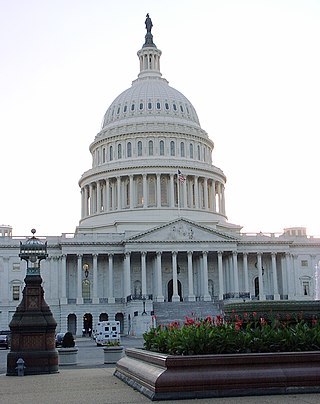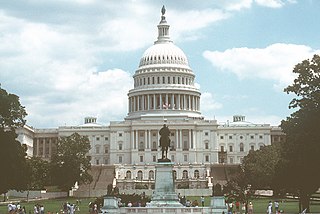The Commission
- Has 16 members
- U.S. House and U.S. Senate Majority nominate 8 people each and the U.S. President appoints 4 from each list
- U.S. House and U.S. Senate Minority nominates four people each and the U.S. President appoints two from each
- 4 people self-determined by U.S. President
Chair: supervises commission staff and regulates funding.
Members must be "balanced by area of expertise and balanced geographically".
To be eligible, members must be "Representatives, knowledgeable in ocean and coastal activities, from state and local governments, ocean-related industries, academic and technical institutions, and public interest organizations involved with scientific, regulatory, economic, and environmental ocean and coastal activities." (https://web.archive.org/web/20060207190735/http://www.oceancommission.gov/documents/oceanact.html)
The Commission's report is required to include the following, as relevant to U.S. ocean and coastal activities:
- an assessment of facilities (people, vessels, computers, satellites)
- a review of federal activities
- a review of the cumulative effect of federal laws
- a review of the supply and demand for ocean and coastal resources
- a review of the relationships between federal, state, and local governments, and the private sector
- a review of the opportunities for the investment in new products and technologies
- recommendations for modifications to federal laws and/or the structure of federal agencies
- a review of the effectiveness of existing federal interagency policy coordination
The Commission is to give equal consideration to environmental, technical feasibility, economic, and scientific factors. In addition, the recommendations may not be specific to the lands or waters within a single state.

The Gramm–Rudman–Hollings Balanced Budget and Emergency Deficit Control Act of 1985 and the Balanced Budget and Emergency Deficit Control Reaffirmation Act of 1987 were the first binding spending constraints on the federal budget.

The federal government of the United States is the national government of the United States, a federal republic located primarily in North America, composed of 50 states, five major self-governing territories, several island possessions, and the federal district and national capital of Washington, D.C., where most of the federal government is based.

The 106th United States Congress was a meeting of the legislative branch of the United States federal government, composed of the United States Senate and the United States House of Representatives. It met in Washington, D.C., from January 3, 1999, to January 3, 2001, during the last two years of Bill Clinton's presidency. The apportionment of seats in the House of Representatives was based on the 1990 United States census. Both chambers maintained a Republican majority.

The 102nd United States Congress was a meeting of the legislative branch of the United States federal government, composed of the United States Senate and the United States House of Representatives. It met in Washington, D.C., from January 3, 1991, to January 3, 1993, during the last two years of George H. W. Bush's presidency. This is the most recent Congress where Republicans held a Senate seat from California.

The 100th United States Congress was a meeting of the legislative branch of the United States federal government, composed of the United States Senate and the United States House of Representatives. It met in Washington, D.C., from January 3, 1987, to January 3, 1989, during the last two years of Ronald Reagan's presidency. The apportionment of seats in the House of Representatives was based on the 1980 United States census.

The United States Senate Committee on Commerce, Science, and Transportation is a standing committee of the United States Senate. Besides having broad jurisdiction over all matters concerning interstate commerce, science and technology policy, and transportation, the Senate Commerce Committee is one of the largest of the Senate's standing committees, with 28 members in the 117th Congress. The Commerce Committee has six subcommittees. It is chaired by Sen. Maria Cantwell (D-WA) with Sen. Ted Cruz (R-TX) as Ranking Member. The majority office is housed in the Dirksen Senate Office Building, and the minority office is located in the Hart Senate Office Building.

The 98th United States Congress was a meeting of the legislative branch of the United States federal government, composed of the United States Senate and the United States House of Representatives. It met in Washington, D.C., from January 3, 1983, to January 3, 1985, during the third and fourth years of Ronald Reagan's presidency. The apportionment of seats in the House of Representatives was based on the 1980 U.S. census.

The Environmental Quality Improvement Act of 1970 is a United States environmental law which was passed to work in conjunction with the National Environmental Policy Act of 1969 (NEPA). One of the two major purposes of the Act was to authorize the creation of an Office of Environmental Quality to provide the professional and administrative staff needed for the Council on Environmental Quality. The second major purpose was to "assure that each Federal department and agency conducting or supporting public works activities which affect the environment shall implement the policies under existing law". To accomplish these purposes, the act gave more responsibilities to the chairman of the Council on Environmental Quality in his new role as director of the Office of Environmental Quality.

The Magnuson–Stevens Fishery Conservation and Management Act (MSFCMA), commonly referred to as the Magnuson–Stevens Act (MSA), is the legislation providing for the management of marine fisheries in U.S. waters. Originally enacted in 1976 to assert control of foreign fisheries that were operating within 200 nautical miles off the U.S. coast, the legislation has since been amended, in 1996 and 2007, to better address the twin problems of overfishing and overcapacity. These ecological and economic problems arose in the domestic fishing industry as it grew to fill the vacuum left by departing foreign fishing fleets.

The United States Federal Maritime Commission (FMC) is an independent agency of the United States government that is responsible for the regulation of oceanborne international transportation of the U.S. It is chaired by Daniel B. Maffei.

In the United States, highway beautification is the subject of the Highway Beautification Act (HBA), passed in the Senate on September 16, 1965 and in the U.S. House of Representatives on October 8, 1965, and signed by the President Lyndon B. Johnson on October 22, 1965. This created "23 USC 131" or Section 131 of Title 23, United States Code (1965), commonly referred to as "Title I of the Highway Beautification Act of 1965, as Amended", and nicknamed "Lady Bird's Bill." It was the pet project of the First Lady, Lady Bird Johnson, who believed that beauty, and generally clean streets, would make the U.S. a better place to live.
The Joint Ocean Commission Initiative is a bipartisan, collaborative group in the United States that aims to "accelerate the pace of change that results in meaningful ocean policy reform." The Joint Initiative was established by the members of two major U.S.-based oceans commissions: the Pew Oceans Commission and the United States Commission on Ocean Policy. It was originally co-chaired by former White House Chief of Staff Leon Panetta and former Chief of Naval Operations Admiral James D. Watkins, chairs of the Pew and U.S. Ocean Commissions, respectively. Currently, the Joint Initiative is led by a Leadership Council, which is co-chaired by Christine Todd Whitman, former EPA Administrator under President George W. Bush and former governor of New Jersey, and Norman Y. Mineta, Secretary of Commerce under President Bill Clinton and Secretary of Transportation under President George W. Bush.
The America COMPETES Act was authored by Bart Gordon and signed into law on August 9, 2007, by President George W. Bush. The act aimed to invest in innovation through research and development and improve the competitiveness of the United States.

The Shark Conservation Act of 2009 (SCA) was passed by the 111th United States Congress that amended the High Seas Driftnet Fishing Moratorium Protection Act and the Magnuson–Stevens Fishery Conservation and Management Act to improve the conservation of sharks. The bill was approved by the House of Representatives on March 2, 2009 by voice vote. It was taken up by the Senate and amended to incorporate further changes to Magnuson-Stevens, known as the International Fisheries Agreement Clarification Act. The Senate passed the amended bill as the Shark Conservation Act of 2010 on December 20, 2010 by unanimous consent, and the next day the House accepted the amendment, again by voice vote. The bill was signed into law by President Barack Obama on January 4, 2011.
The Affordable Health Care for America Act was a bill that was crafted by the United States House of Representatives of the 111th United States Congress on October 29, 2009. The bill was sponsored by Representative Charles Rangel. At the encouragement of the Obama administration, the 111th Congress devoted much of its time to enacting reform of the United States' health care system. Known as the "House bill,” HR 3962 was the House of Representatives' chief legislative proposal during the health reform debate.

The Arctic policy of the United States is the foreign policy of the United States in regard to the Arctic region. In addition, the United States' domestic policy toward Alaska is part of its Arctic policy.

The Harmful Algal Bloom and Hypoxia Research and Control Amendments Act of 2014 is a U.S. public law that reauthorizes and modifies the Harmful Algal Bloom and Hypoxia Research and Control Act of 1998 and would authorize the appropriation of $20.5 million annually through 2018 for the National Oceanic and Atmospheric Administration (NOAA) to mitigate the harmful effects of algal blooms and hypoxia.
Every year, the United States Congress is responsible for writing, passing, reconciling, and submitting to the President of the United States a series of appropriations bills that appropriate money to specific federal government departments, agencies, and programs for their use to operate in the subsequent fiscal year. The money provides funding for operations, personnel, equipment, and activities. In 2014, Congress was responsible for passing the appropriations bills that would fund the federal government in fiscal year 2015, which runs from October 1, 2014, to September 30, 2015.

The Marine Policy of the Barack Obama administration comprises several significant environmental policy decisions for the oceans made during his two terms in office from 2009 to 2017. By executive action, US President Barack Obama increased fourfold the amount of protected marine space in waters under United States control, setting a major precedent for global ocean conservation. Using the U.S. president's authority under the Antiquities Act of 1906, he expanded to 200 nautical miles the seaward limits of Papahānaumokuākea Marine National Monument in Hawaiʻi and the Pacific Remote Islands Marine National Monument around the U.S. island possessions in the Central Pacific. In the Atlantic, Obama created the Northeast Canyons and Seamounts Marine National Monument, the first marine monument in the U.S. exclusive economic zone (EEZ) in the Atlantic.

The United States Innovation and Competition Act of 2021 (USICA) (S. 1260), formerly known as the Endless Frontier Act, was United States legislation sponsored by Senators Chuck Schumer (D-NY) and Todd Young (R-IN) authorizing $110 billion for basic and advanced technology research over a five-year period. Investment in basic and advanced research, commercialization, and education and training programs in artificial intelligence, semiconductors, quantum computing, advanced communications, biotechnology and advanced energy, amounts to $100 billion. Over $10 billion was authorized for appropriation to designate ten regional technology hubs and create a supply chain crisis-response program. The act is aimed at competing with China and to respond to US fears of an AI Cold War.









